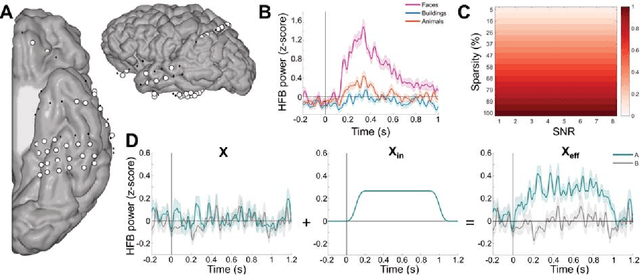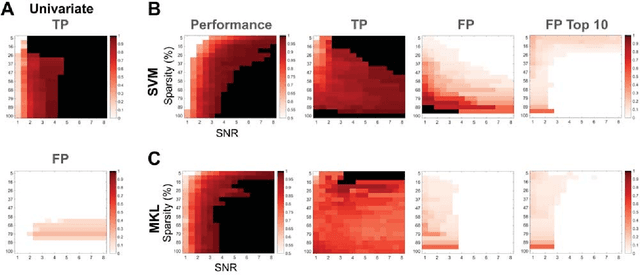Interpreting weight maps in terms of cognitive or clinical neuroscience: nonsense?
Paper and Code
Apr 30, 2018

Since machine learning models have been applied to neuroimaging data, researchers have drawn conclusions from the derived weight maps. In particular, weight maps of classifiers between two conditions are often described as a proxy for the underlying signal differences between the conditions. Recent studies have however suggested that such weight maps could not reliably recover the source of the neural signals and even led to false positives (FP). In this work, we used semi-simulated data from ElectroCorticoGraphy (ECoG) to investigate how the signal-to-noise ratio and sparsity of the neural signal affect the similarity between signal and weights. We show that not all cases produce FP and that it is unlikely for FP features to have a high weight in most cases.
 Add to Chrome
Add to Chrome Add to Firefox
Add to Firefox Add to Edge
Add to Edge